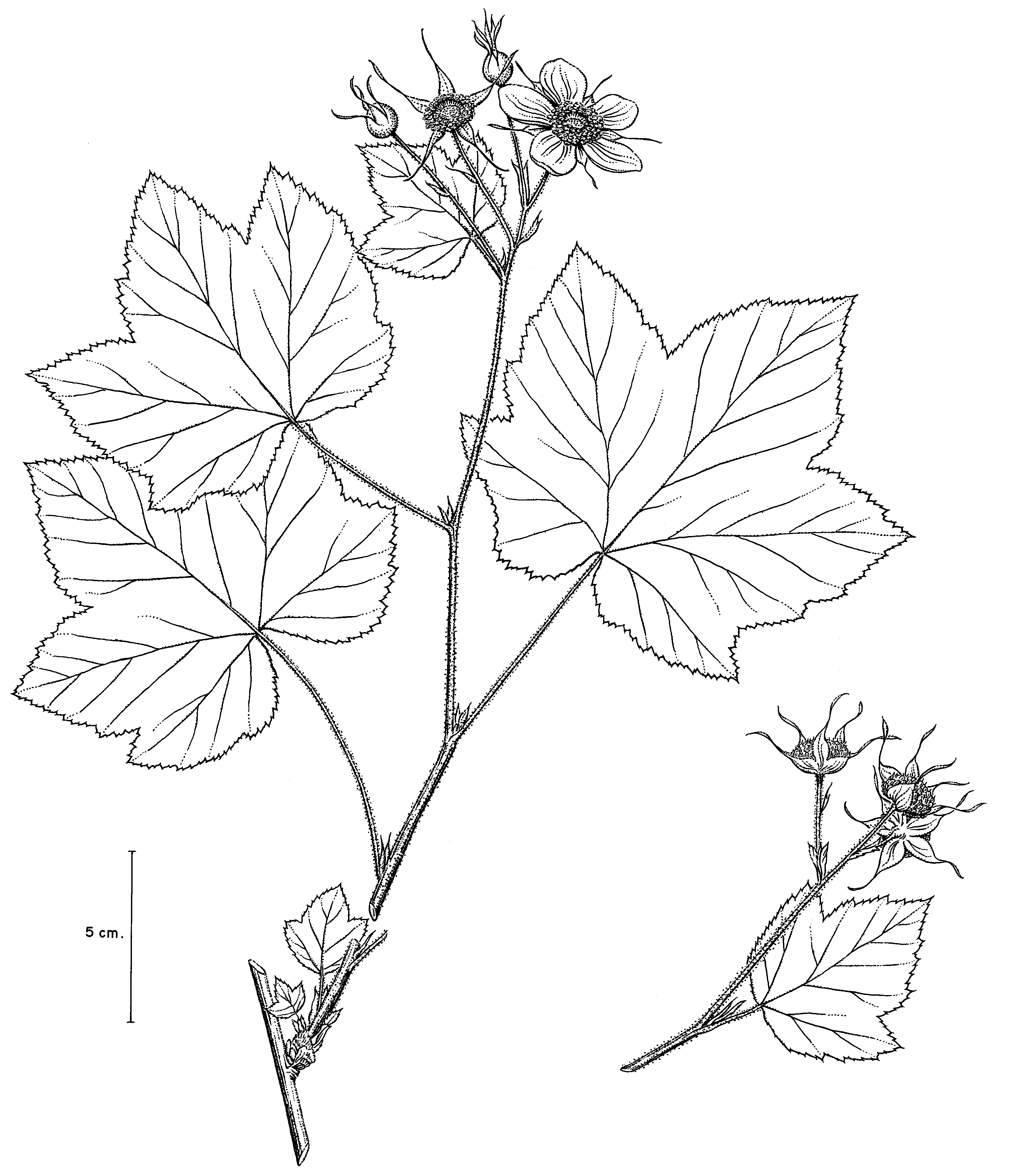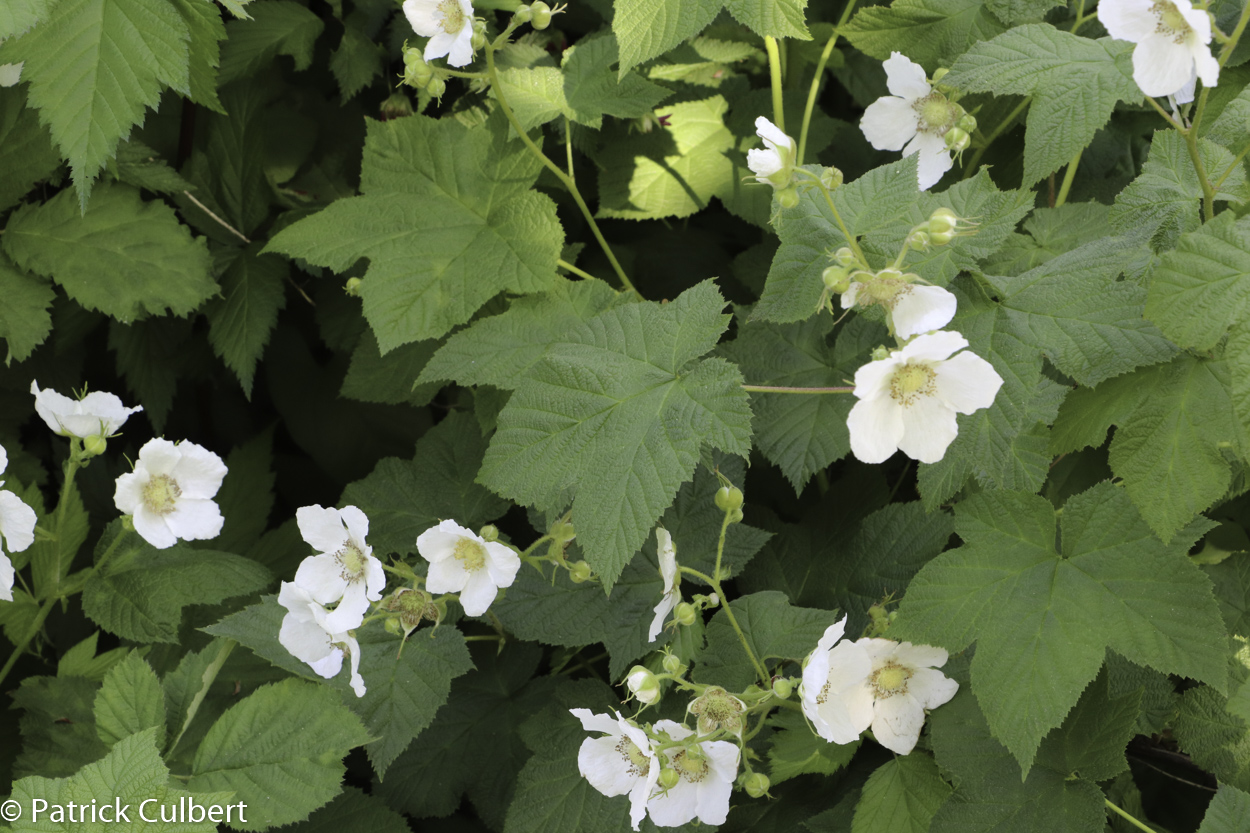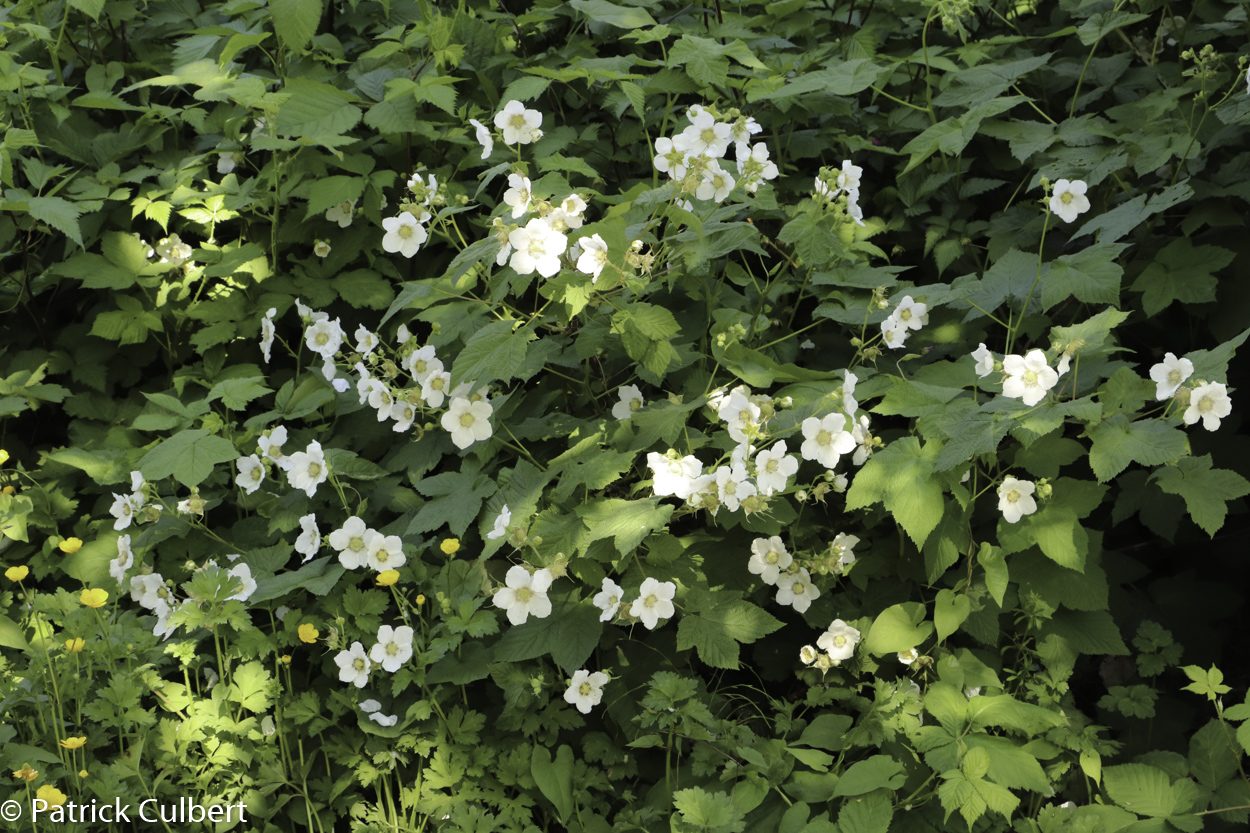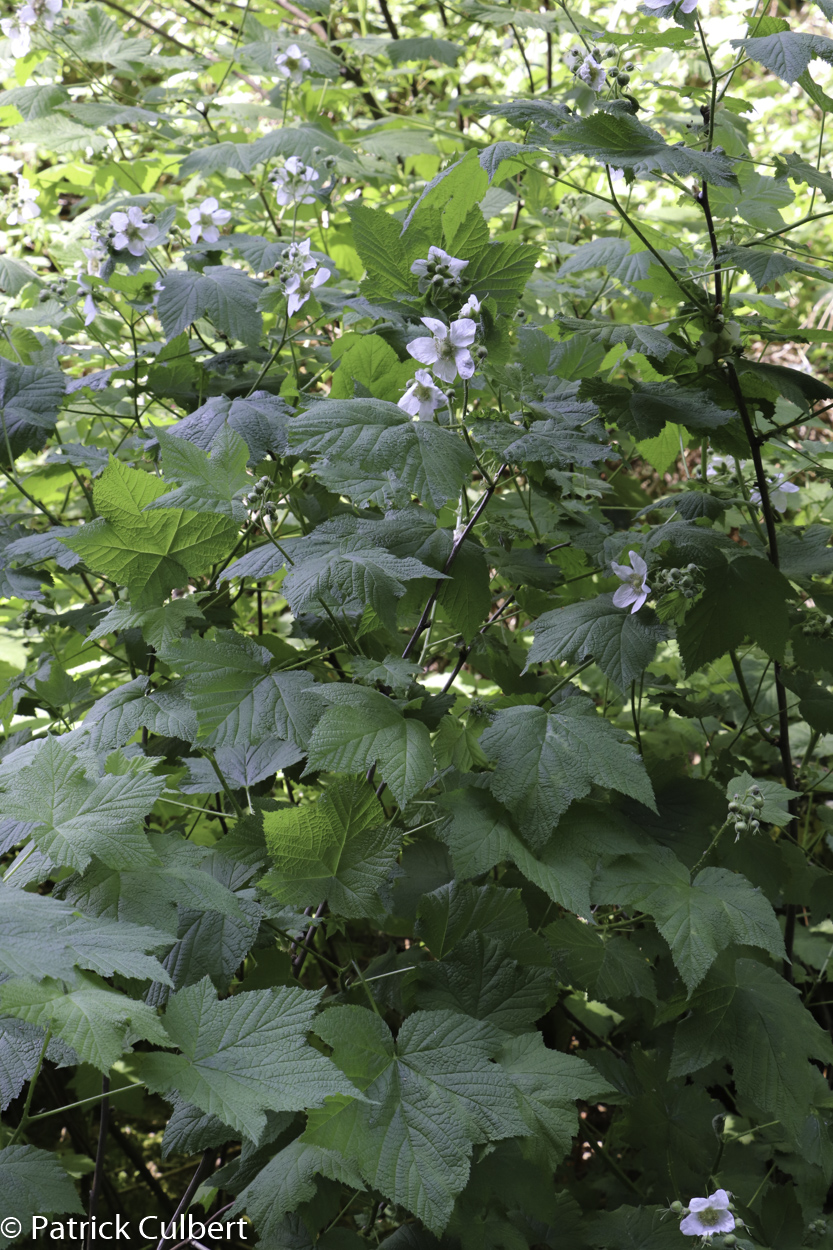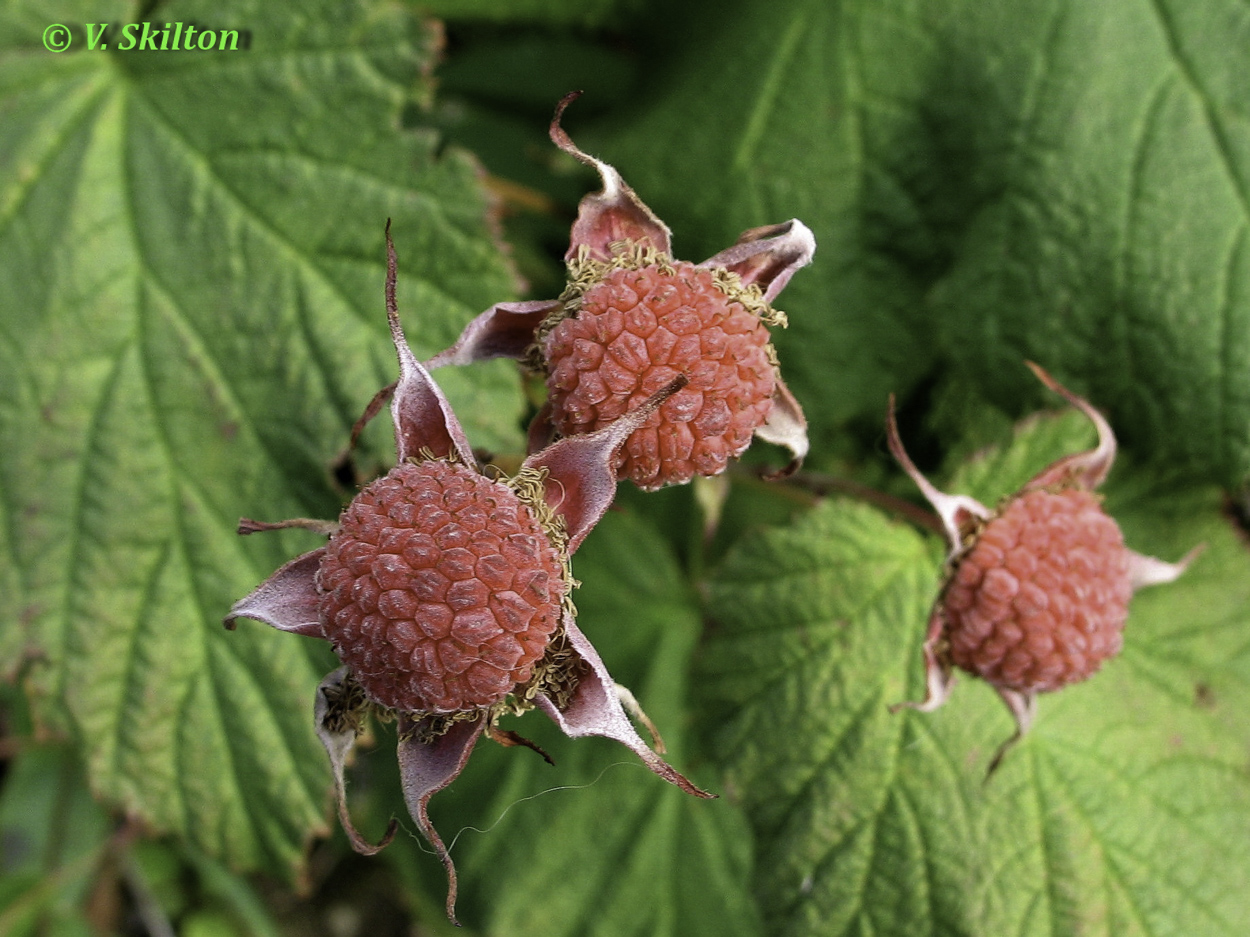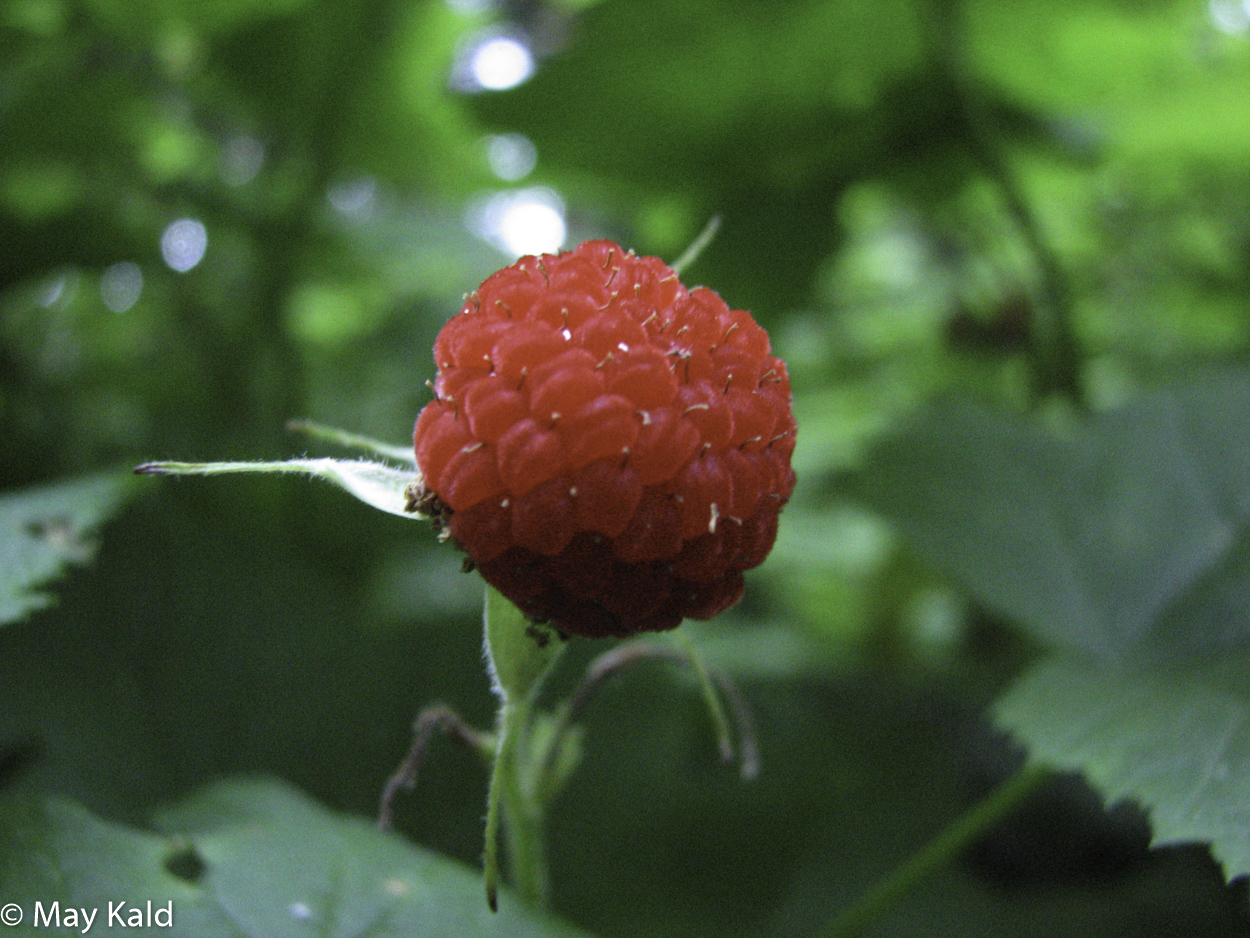Rubus parviflorus – thimbleberry
Common Name
thimbleberry
Alternate Common Names
- snow bramble
Family
Rosaceae
Scientific Name
Rubus parviflorus
Soil Moisture Regime (SMR)
- Medium (M)
Soil Nutrient Regime (SNR)
- Rich (R)
Video link
Hitchcock, C. Leo, and Arthur Cronquist. Flora of the Pacific Northwest: An Illustrated Manual © 1973. Reprinted with permission of the University of Washington Press.
General / Habitat
- Unarmed, rhizomatous (rootlike stem belowground that sends up shoots) shrub (woody stem)
- Typically forms dense thickets
- Occurs in open forests, clearings and edge habitat
- Low to subalpine elevations.
Key Identifying Characteristics
- Form: Grows erect up to 3 m tall
- Leaves: Alternate, large (25 cm across), maple-leaf shaped, 3-7 lobes, finely fuzzy on both sides
- Flowers: White and large. 3-11 flowers are borne in a terminal cluster on a long stem
- Fruit: A shallowly-domed, bright red raspberry, resembles a thimble, juicy and delicious
Interesting Characteristics
- Eaten by all Northwest Coastal people
- Fruit resembles a thimble
External References
Sources
Douglas, G.W. et al (Editors). 1998-2002. Illustrated Flora of British Columbia, Volumes 1 to 8. B.C. Min. Environ., Lands and Parks, and B.C. Min. For., Victoria, B.C.
Pojar, J. and A. MacKinnon. 2014. Plants of Coastal British Columbia Including Washington, Oregon & Alaska. B.C. Ministry of Forestry and Lone Pine Publishing. Vancouver, B.C.

